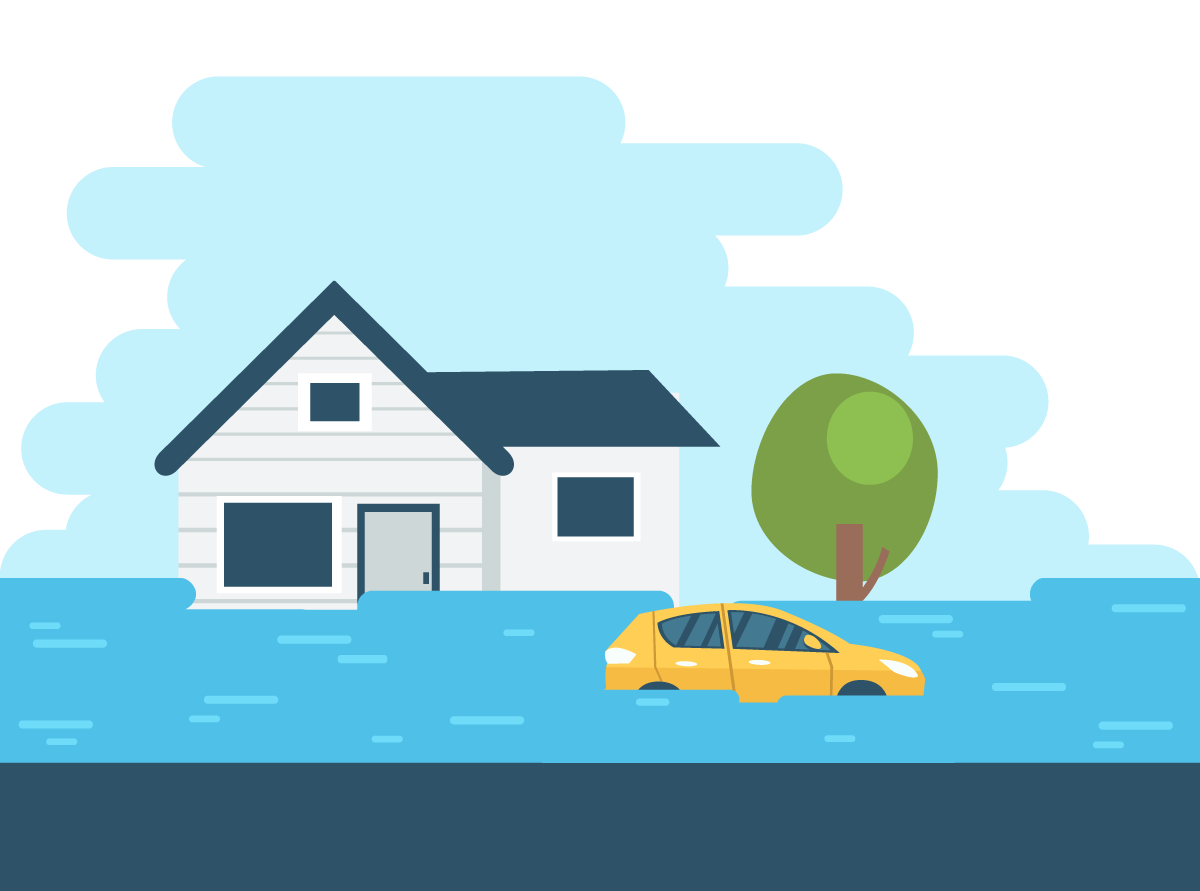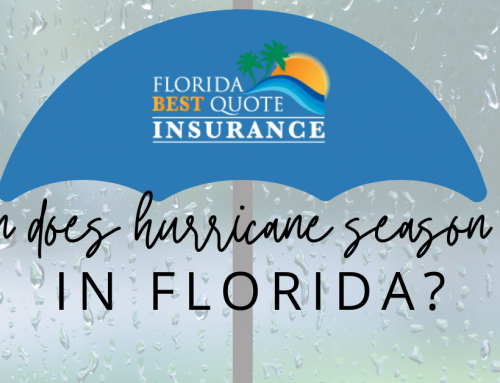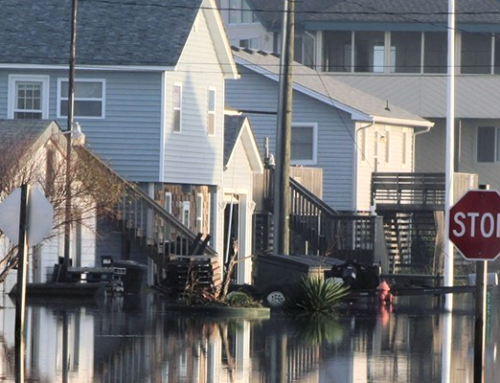Here at Florida Best Quote, we are asked “How much does flood insurance cost?” all the time, and rightfully so! We understand that flood insurance, or even insurance in general, can be very confusing. We’re here to help take the confusion out of the process and outline important facts you should know about flood insurance.

What is Flood Insurance?
A good starting point for understanding how the cost of your flood insurance is calculated is by understanding what it is, and what purpose it serves for your home.
Flood insurance is defined as a type of insurance policy issued to protect your home from harm that could arise from water damage. This potential destruction could be a result of heavy or prolonged rain, melting snow, coastal storm surges, blocked storm drainage systems, or levee dam failure.
In Florida specifically, this can be an incredibly important policy to protect you from coastal flooding that comes from a rainy season. If you are purchasing a home near the ocean, or near a body of water, it will likely be required that you have this type of insurance per your mortgage company.
Am I required to have it?
The simple answer to this question is, it depends where you live or where you are moving to.
In Florida, it is a requirement to have flood insurance if you are located within a qualifying “Flood Zone”. The fact is, the entire state of Florida is in some form of a flood zone, what matters is whether your home falls in an area deemed “moderate” to “high risk of flood.” Typically, if your home falls in a zone other than “X” you are likely required to have a flood insurance policy.
Below is a breakdown of what your flood zone means for your home, and how it is interpreted by your insurance provider.
A Zone: Property is within the 100-year flood plain, there is a 1% chance of flooding in any given year. Flood insurance is required
V Zone: Property is within the 100-year flood plain, also takes velocity or wave action into account, generally beachfront property. Flood insurance is required. Very expensive.
X500 Zone: Property is within the 500-year flood plain and outside of the 100-year flood plain.
- There is a .2% chance of flooding in any given year.
- Flood insurance is NOT required
- Premiums as low as $20/month
Moderate to low-risk zones: ‘B’ ‘C’ or ‘X’:
- Flood insurance is not required but can be obtained
- Premiums are as low as $20/month.
New 2020 Coastal Flooding Maps
In 2019 FEMA announced and released new Coastal Flood Insurance Rate Maps for consumer review. Those maps were made available to the community and an appeals process began.
Once the appeals have been resolved, FEMA will issue “Letters of Final Determination,” which are expected to make the updated preliminary flood hazard information final in 2020. Many properties in Pinellas County will be moved into lower-risk flood zones, and/or the Base Flood Elevation (the elevation where there is a 1% or greater annual chance of flooding) will be reduced. However, there will be some areas where homes are moved into higher-risk flood zones, and/or the BFE will be increasing. Pinellas County has created a website where you can see if the new maps will affect your property here: Pinellascounty.org/flooding/maps
If you see that your flood risk is going to change with these new maps, please reach out to us at any time for a flood review and advise on what steps should be taken moving forward. There are many solutions and options available, even if you are being moved into a higher risk flood zone. Don’t panic, call Florida Best Quote!
What is Used to Calculate the Cost of Flood Insurance?
Now that you understand exactly what flood insurance is, and whether you may be required to have it, let’s dive into how the cost of your flood insurance is calculated.
The driving force of your flood insurance premium comes from what is known as a Base Elevation Certificate. This certificate will need to be provided to your insurance agent if your home is in an at-risk flood zone. An Elevation Certificate is a breakdown of the location of the home, Lowest Floor Elevation, building characteristics, and flood zone.
Your insurance agent will then review these characteristics to compare your home’s Elevation Certificate to the Base Flood Elevation of your home’s area. The Base Flood Elevation is the elevation that floodwaters are estimated to have a 1 percent chance of reaching or exceeding in any given year. The higher the lowest floor of your home is above this BFE, the cheaper your home insurance will be.
Is There Any Way to Lower My Flood Insurance Premium?
Absolutely! Helping clients find the premium that perfectly matches their budget to their desired coverage is what we are all about. Here are some common ways that we help our clients lower their flood insurance premiums.
Amount of Coverage
The first thing to consider with lowering your home’s flood insurance premium is how much coverage you are looking to have on your home. The lowest premium to expect will come from coverage of only what is required for your given home. Any additional coverage would need to be eliminated, which may not be recommended! Additional coverage may be necessary to cover the entirety of the value of your home from flood damage.
Private Market Insurance
A new and significant way to lower your premium is to see what the private market has to offer. In the past, the only flood insurance available came from the federal government via the National Flood Insurance Program (NFIP). Since the Flood Insurance Reform Act of 2012, private market insurance agencies have been able to offer competitive rates for policies. This is a primary resource for our insurance agents, as it allows us to shop all available coverage plans to find the lowest premium with the most coverage for your home.
Changes to the Home
Another way to lower your premium is to actually change the characteristics of your home. A simple change you can make is bringing your existing home up to current standards. Older homes were not built to the standards we now have to protect property from storms. A simple step in achieving this is adding Flood Vents to the lowest floor of your home. These are used to reduce the pressure of floodwaters on the foundation of your home.
Another way many homes in coastal areas accomplish this is by raising the elevation of their home. The higher the lowest floor of your home is from base elevation, the lower your premium will be. Not to mention the fact that this will also protect your home from damage caused by storms.
More Information
We are here to be your local insurance resource in Florida. For more information on anything regarding flood insurance, don’t hesitate to Contact Us. We will gladly help find you find the insurance coverage that suits your budget and lifestyle!





